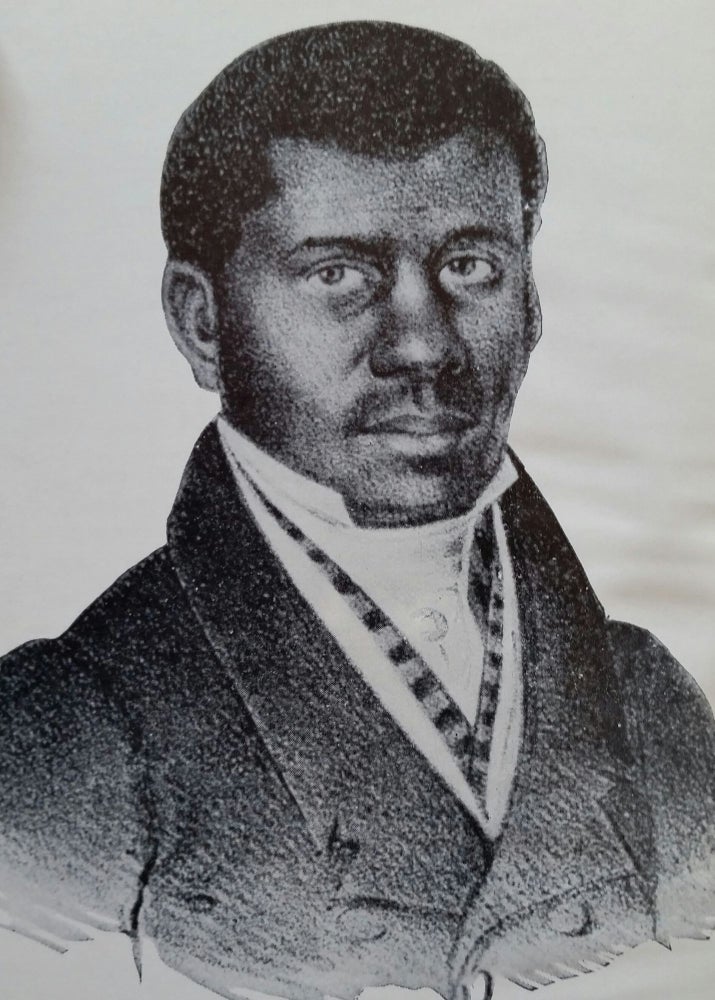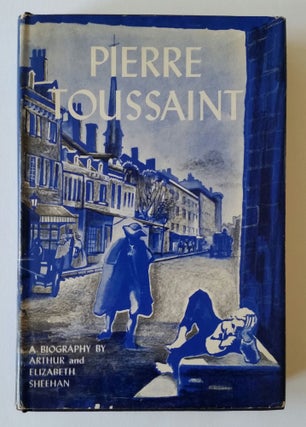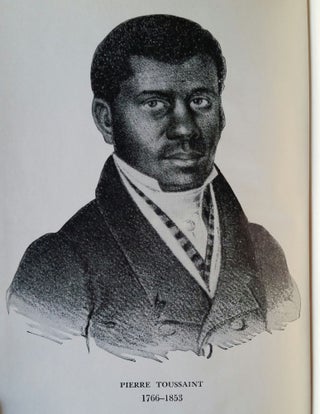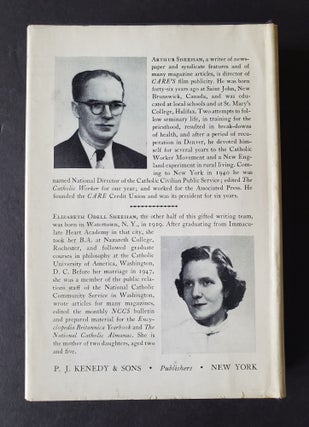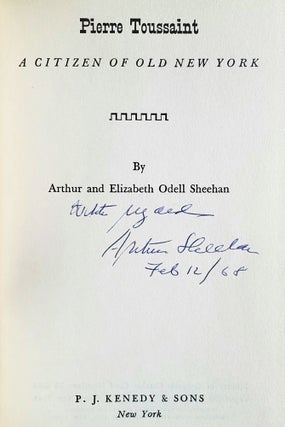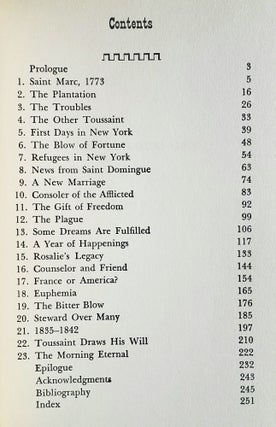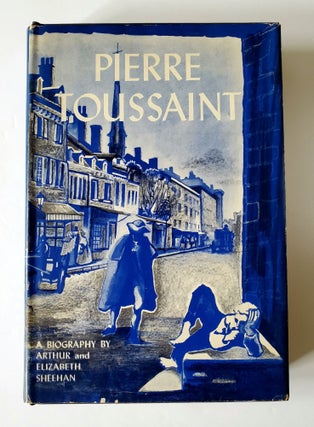Pierre Toussaint; A Citizen of Old New York
New York: P.J. Kenedy & Sons, 1955. First edition. Octavo, original navy cloth, spine lettered in silver, original dust jacket. Book about-fine, dust jacket with a closed tear to top front flap fold. A near-fine copy. Item #482
"'GO TO TOUSSAINT' PEOPLE WOULD SAY, 'HE WILL KNOW WHAT TO DO'"
First edition of this novelistic Life of Pierre Toussaint, the Haitian slave turned New York philanthropist—and the only layperson buried in the Crypt below the High Altar of St. Patrick's Cathedral. Authored by Arthur Sheehan (an editor of the Catholic Worker) and his wife Elizabeth, this copy was inscribed by Arthur on the title page.
Born a slave in the French colony of Haiti, Pierre Toussaint was brought to New York by his masters, the Berard family, in 1787. Pierre and the Berard's found the Anglo-Dutch city of New York to be quite different from their Caribbean home. When his master died, Toussaint flourished as a hairdresser, supporting his mistress and her household all the while becoming familiar with the local gentry. Freed by his mistress shortly before her death in 1807, Pierre then purchased the freedom of Juliette Noel, his future wife. Together the couple embraced a life of personal charity and critical financial support for the establishment of orphanages and schools by Mother Seton's Sisters of Charity.
Illustrated with a frontispiece portrait, the hagiography feels quaint today but it is a valuable chronicle of Racism and Nativism in Old New York. The Roman Catholic community in the city was huddled around several tiny immigrant parishes (notably St. Peter's on Barclays Street and St. Patrick’s on Mott Street), entirely surrounded by an often-hostile Nativist Protestant majority. The authors lament that, for all his accomplishments, a now old and tired Toussaint could not ride on the city's public omnibus: "for though time had bent his tall frame, bowing it and stooping it, it had not altered the color of his face. That was still black." When Toussaint died in June 1853, "St. Peter's Church was crowded on the day of his funeral with persons, both white and Negro, who had revered him." Toussaint was buried in the church yard within the old brick wall at Old Saint Patrick’s (where he was once refused entry). The epilogue describes the dogged efforts of Father Charles H. McTeague to locate Toussaint's now-obscured headstone. Toussaint was honored by Cardinal Spellman's visit to Old St. Pat's in 1951 to bless a graveside plaque. In June 1953, Toussaint was honored again with a pontifical Mass at Old St. Peter's on Barclay Street to commemorate the centenary of his death. Toussaint was declared Venerable in 1996 and his remains now rest in a crypt below the altar of St. Patrick's Cathedral on Fifth Avenue. Acknowledgments, an extensive Bibliography, and an Index follow the text.
Price: $75.00

